I am the kind of gardener who tends to get overexcited and take on too much, and then I become overwhelmed when there is just too much to do! Does this sound like you?
I am therefore always on the lookout for easier ways to do things.
So when I learned that I could start seeds in the fall to get a head start on the next season, I was all in!
Pre-seeding is a simple method to get a jump-start on a bigger, better garden next season.
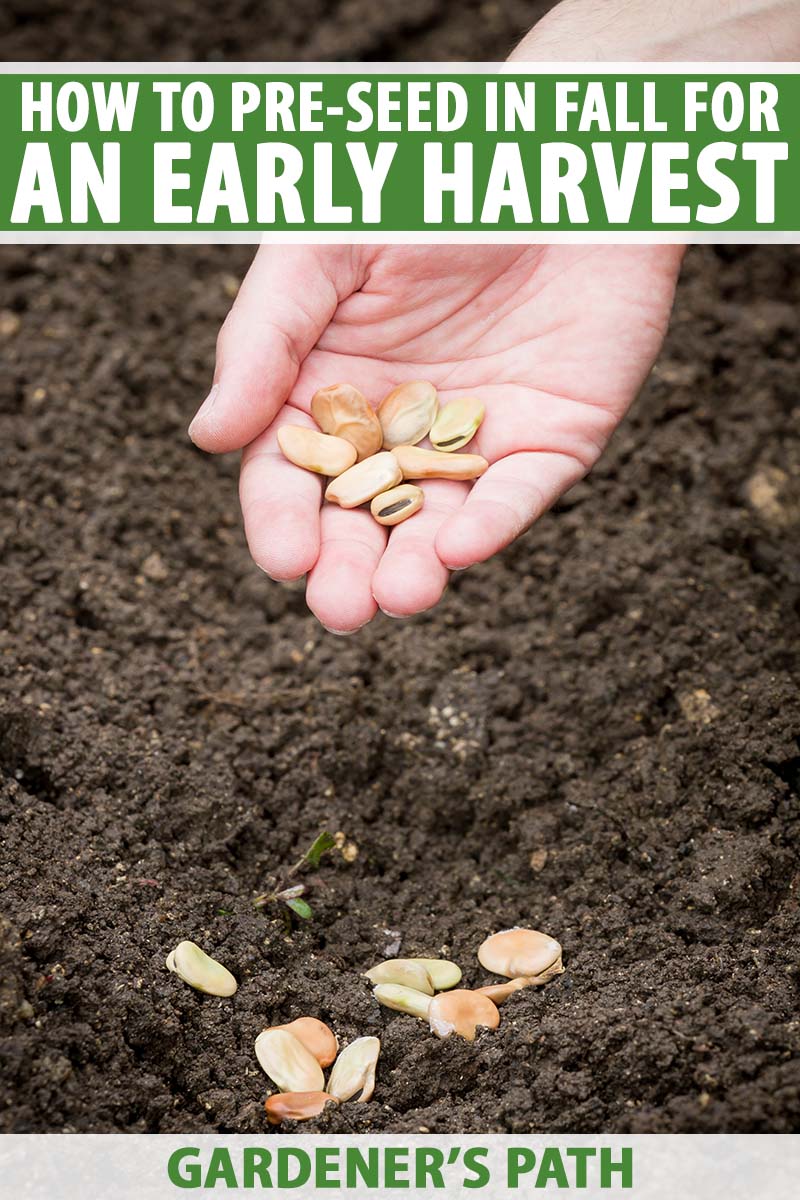
We link to vendors to help you find relevant products. If you buy from one of our links, we may earn a commission.
With just a few minutes of extra work during autumn, you will be rewarded next spring with better germination rates, earlier sprouts, and healthier, more robust plants.
Read on to learn how to pre-seed your vegetable garden in the fall for an early harvest the following spring.
What You’ll Learn
What Is Fall Pre-Seeding?
Pre-seeding simply refers to planting seeds in late fall or early winter, in preparation for next spring’s garden.
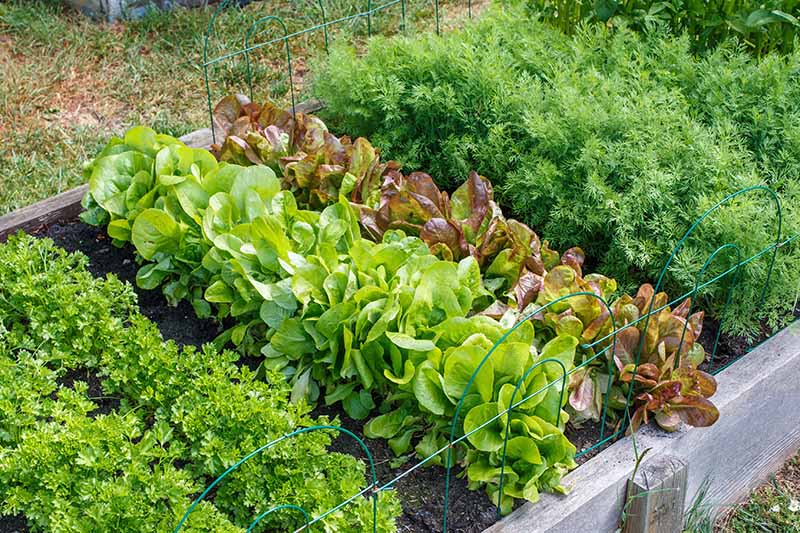
In nature, when seeds from a plant land on the surrounding soil, they often do not sprout right away.
Instead, they may remain dormant through the winter, waiting to sprout as soon as the temperatures warm up in the spring.
Some seeds require or can benefit from cold stratification to germinate, meaning they are naturally triggered to sprout by a period of freezing followed by a spring thaw.
There are certain plants we tend to always plant in advance, such as garlic or spring bulbs. But as it turns out, these are not the only plants that can be sown ahead of time.
Many edible crops and even flowers may be pre-seeded, and in fact, most tend to do quite well.
Pre-seeding works best in colder climates where the ground stays frozen consistently through the winter. Climates with more regular freeze and thaw cycles could cause some seeds to germinate too early – and the sprouts will fail to thrive.
Similar to storing seeds in the freezer until you are ready to plant them, the frozen ground is storing seeds through the winter until it is time for them to sprout in spring.
Why Pre-Seed?
Starting seeds in the fall and allowing them to overwinter leads to earlier germination and healthier, more acclimated plants.

Because germination is allowed to happen naturally, as opposed to starting them in an artificial environment such as a greenhouse or indoors, seedlings will appear when conditions are right.
They will be exposed to the elements right from the start, often sprouting up earlier, and with better resilience to natural environmental conditions as a result.
Plants started in greenhouses, in contrast, do not experience drastic changes in temperature, water, or light until they are set outside. Because of this, we need to harden off seedlings before transplanting them outside where they will be exposed to cool weather, rain, wind, and direct sunlight.
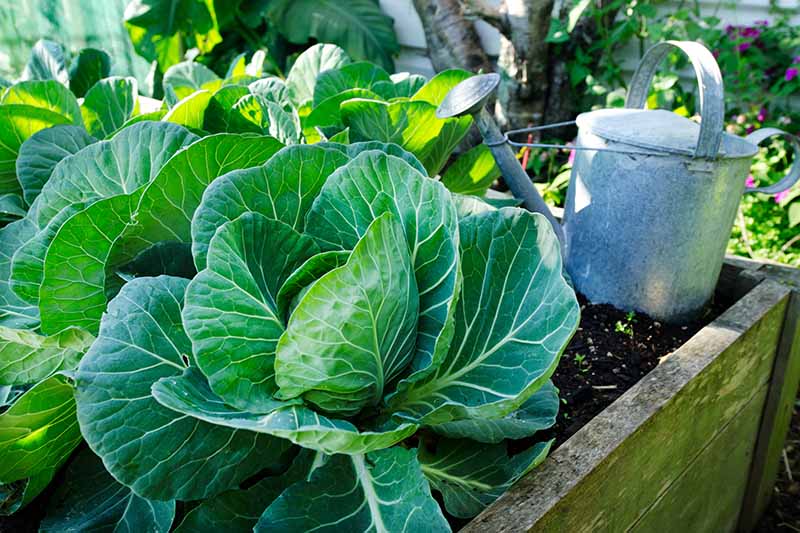
When a plant isn’t prepared sufficiently for exposure to the elements, seedlings become stressed more easily and growth can slow or even stop. Pre-seeding removes the possibility of this type of stress entirely, allowing nature to do its thing.
Why pre-seed in the fall instead of direct seeding in the spring? In most cases, seeds that are sown in autumn will sprout up earlier than spring planted ones, giving your garden a head start. And for those seeds that require cold stratification, this will happen naturally, removing the need to place seeds in the freezer or refrigerator.
How to Pre-Seed
Pre-seeding your garden is a cinch. Start with a well draining garden bed, ideally in a position that will receive full sun in spring.
You can track the movement of the sun in different parts of your garden through the seasons in your gardening journal, as a reminder.
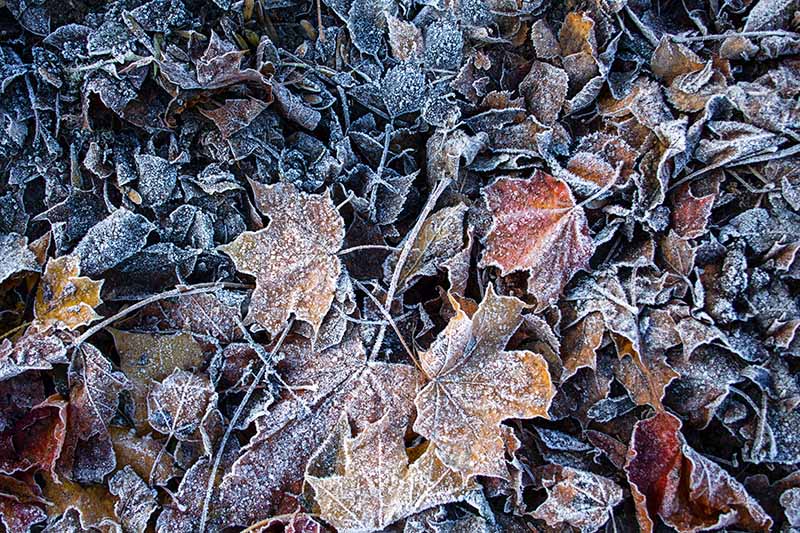
This method won’t work in places that tend to collect standing water, as this could cause seeds to rot.
Prepare the bed in the fall by clearing away plant litter from this year’s garden and working some fresh compost into the soil.

Autumn leaves can be placed on your compost pile or saved to use as a winter mulch.
After the air temperature drops below freezing but before the ground freezes solid, direct sow at the soil depth that is recommended on your seed packets.
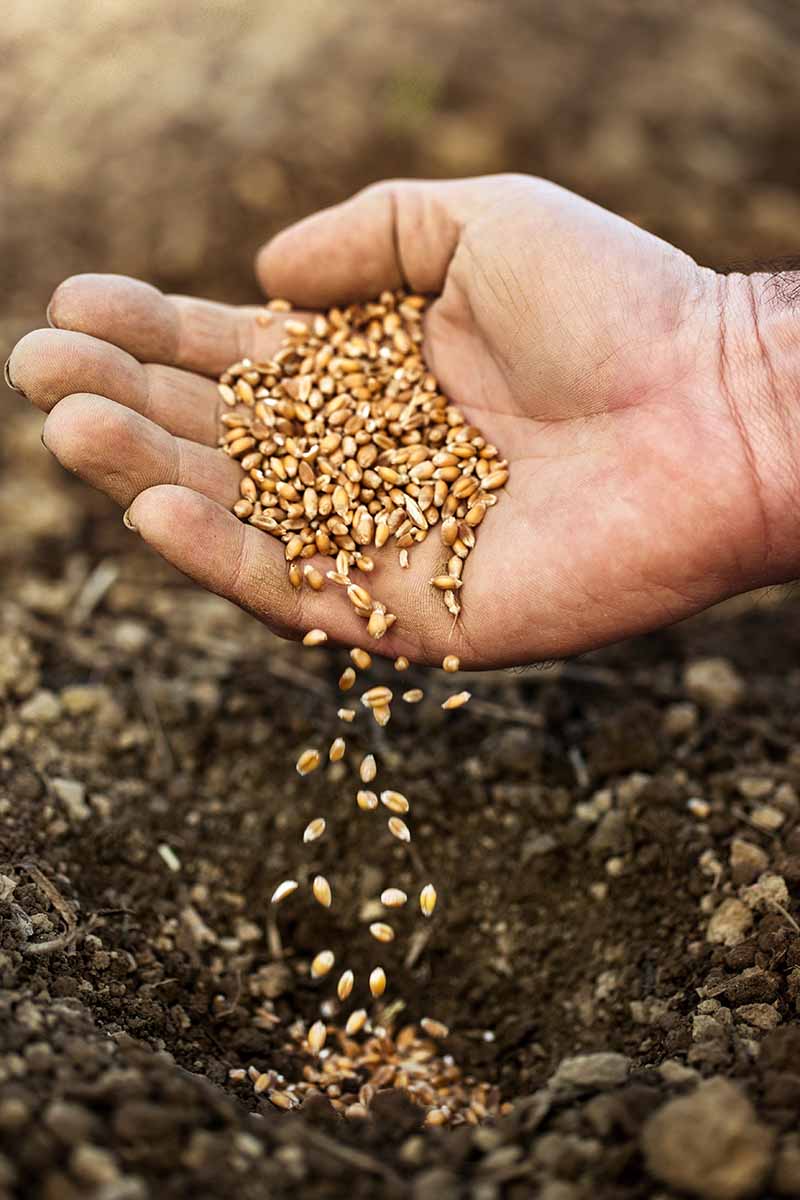
Water well, and cover with an inch or two of straw or shredded leaves. The mulch will keep the ground from thawing in case temperatures ever become unseasonably warm.
Keep watch in early spring and you will start to see little seedlings popping up!
What Plants Can Be Pre-Seeded?
Any type of cold hardy vegetables can be pre-seeded. Look for seeds that require cold stratification, or packets that say things like “sow outdoors in early spring,” “self-sowing,” or “withstand frost.”
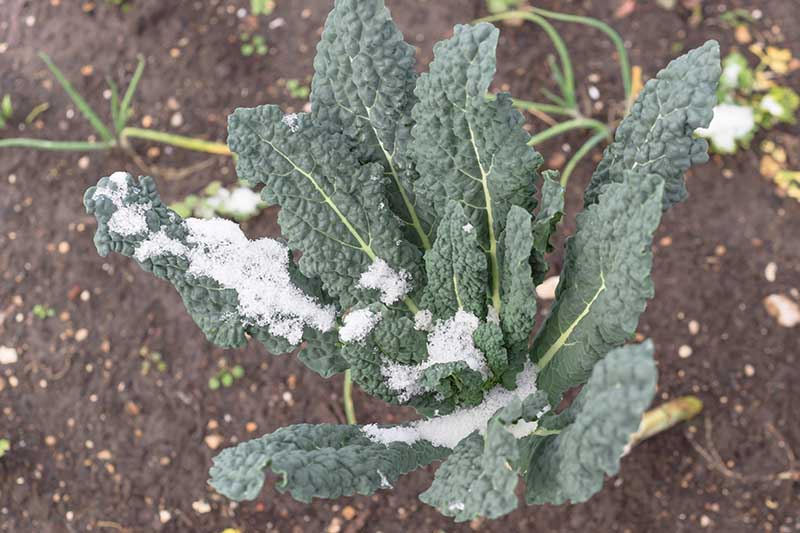
Which vegetables are safe bets? Give these a try:
It may be possible to pre-seed less cold hardy plants such as tomatoes, beans, corn, and squash, though these may or may not be very successful. These vegetables are best started indoors, as seeds require warmer soil temperatures to germinate, and they require a long growing season to reach maturity.
You can learn more about which seeds to start indoors vs. outdoors in our guide.
Are there certain plants that seem to show up in your garden as volunteers every year? These could be good choices to try!
In addition to vegetables, many perennials, annual flowers, and woody herbs can also be pre-seeded in autumn. Try seeding echinacea, black-eyed Susans, lupines, wild columbine, cosmos, calendulas, or poppies.
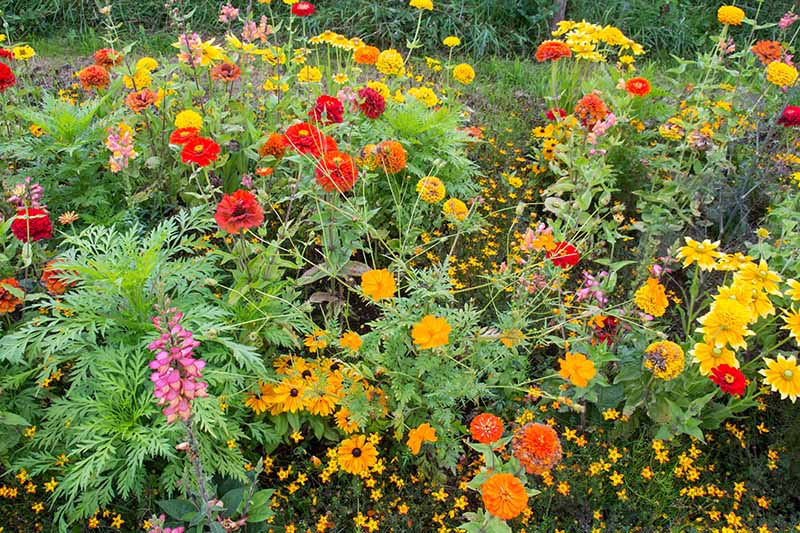
Seeds described as wildflowers also typically do well when seeded in fall.
Check out our guide to sowing flower seeds in winter for more information.
Alternative “Mini Greenhouse” Method
Another way to get a jump start on spring is to sow seeds outdoors in covered containers, essentially creating “mini greenhouses” that will house them over the winter.
This method combines the advantages of early sowing, but gives the seeds a little extra protection through the colder months.
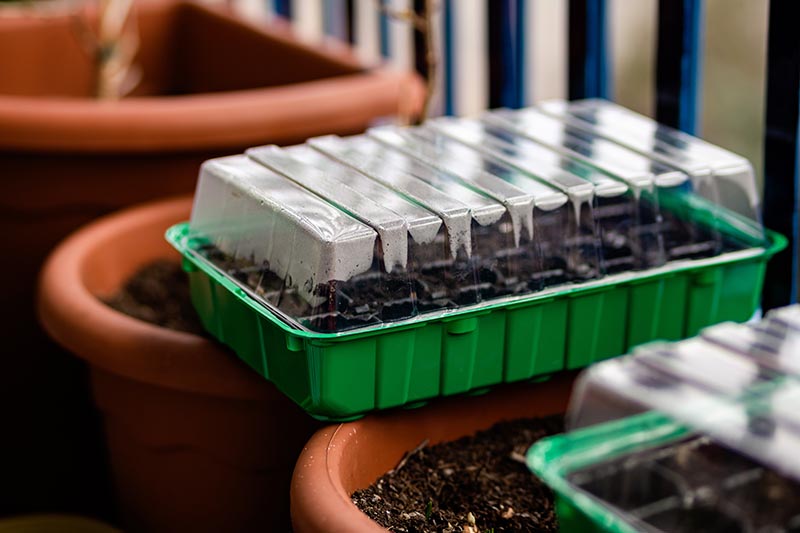
It is particularly useful for seeds that require cold stratification to germinate.
This method, also known as winter sowing, combines the benefits of fall sowing with a little extra TLC to give seedlings an earlier start.
To create a mini greenhouse, you can use garden flats (with a humidity dome), takeout containers, or plastic bottles, and cut holes for drainage in the bottom and holes for ventilation in the cover.
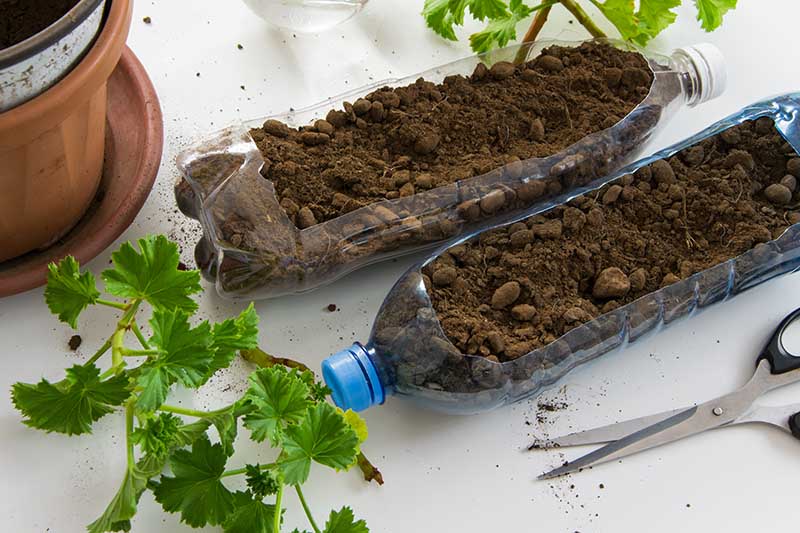
Add three to five inches of potting soil, water soil thoroughly, and allow it to drain.
Next, sow your seeds at the correct soil depth as instructed on the packet and place the cover on top.
Set the containers outside in a location that is safe through the winter like a covered porch, and leave them be!
Once spring arrives, and temperatures start to go above freezing during the day, water the soil to keep it evenly moist until germination occurs.
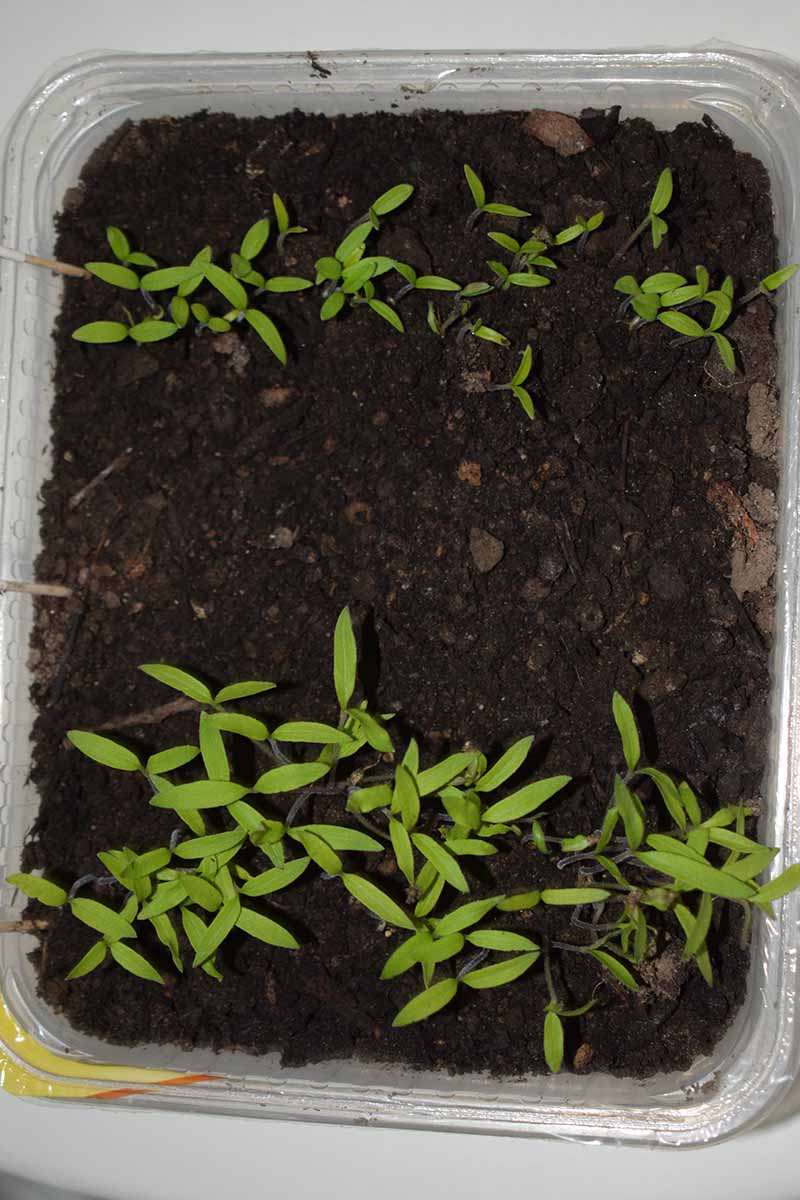
As the seedlings grow, you can widen the holes in the cover to increase air circulation and place them in a sunny spot.
You can remove the cover once temperatures stay above freezing consistently and the seedlings have grown a couple sets of true leaves.
Transplant the starts as you normally would, and there’s no need to worry about hardening them off!
It’s Just Too Easy to Pass Up
Pre-seeding in fall is so incredibly easy there is no reason not to give it a go! When spring comes, you can sit back, relax, and watch as the little seedlings begin to sprout.
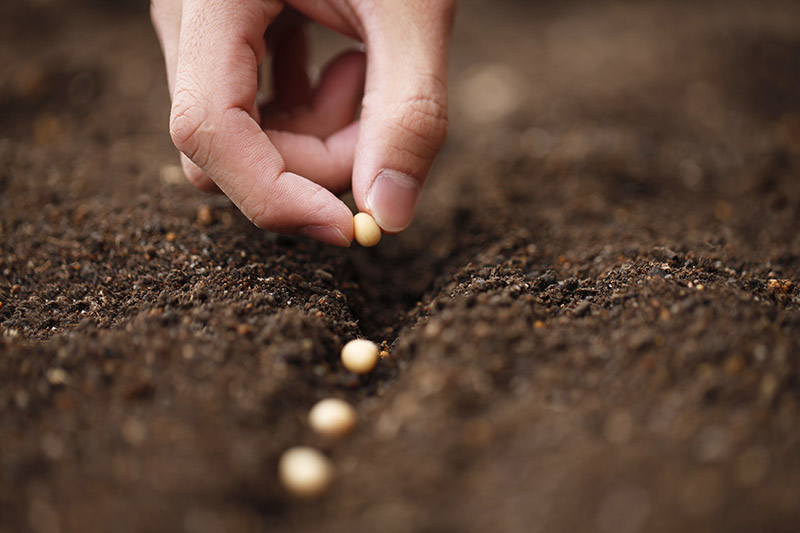
Do you pre-seed your garden in the fall? Share your tips in the comments below.
And for more ideas on how to extend your vegetable gardening season, check out these guides next:
- 12 Easy Ways to Extend the Harvest Season
- Extend the Season and Keep Pests Out with Floating Row Covers
- 10 of the Best DIY Greenhouses and Cold Frames For Your Backyard
© Ask the Experts, LLC. ALL RIGHTS RESERVED. See our TOS for more details. Uncredited photos: Shutterstock.
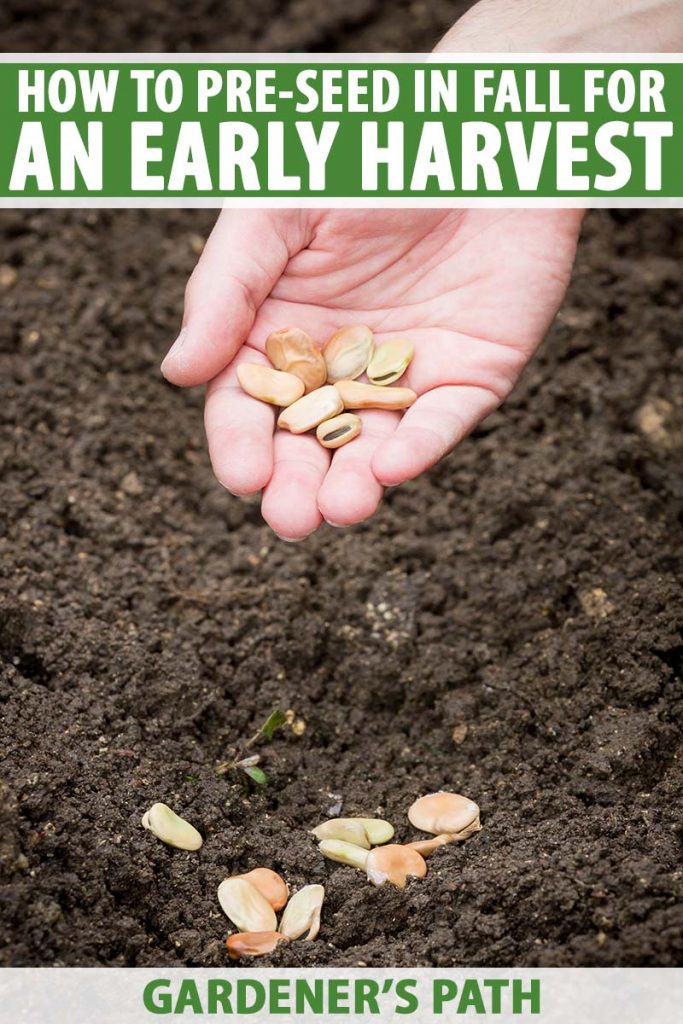
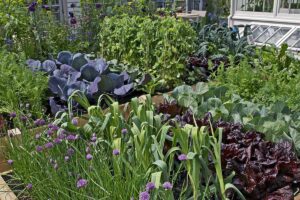
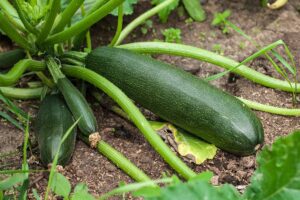
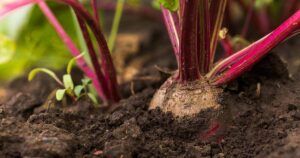
I preseed for my wild flower garden but never thought to do it with my veggie garden. I was surprised to get a ton of volunteer cherry tomato and tomatillo seedlings this spring- I live up north so I usually don’t even plant out my seedlings until June. These plants were so much healthier looking than my indoor started seedlings that I just transplanted the volunteers to the spot I wanted and have my other seedlings away. I plan on preseeding with the saved seeds this fall and starting indoor seedlings too just in case the winter is especially harsh.
Thanks for sharing! I also live up north and find that my volunteers tend to grow huge and be super productive as well. I would love to hear the results of the preseeding with your saved veggie seeds!
Thank you for this thoughtful article. I planted in March this year with great germination results. I will definitely try this in one of my beds this fall in the Cold Hollows of Vermont. ????
Thanks for reading! Glad you found this article useful. Good luck with preseeding this fall. I would love to hear how it goes!
I live in central Minnesota and am giving preseeding a try for the first time this year!
Wow, Emily H, that sounds great. Please let us know how it goes if you get the chance.